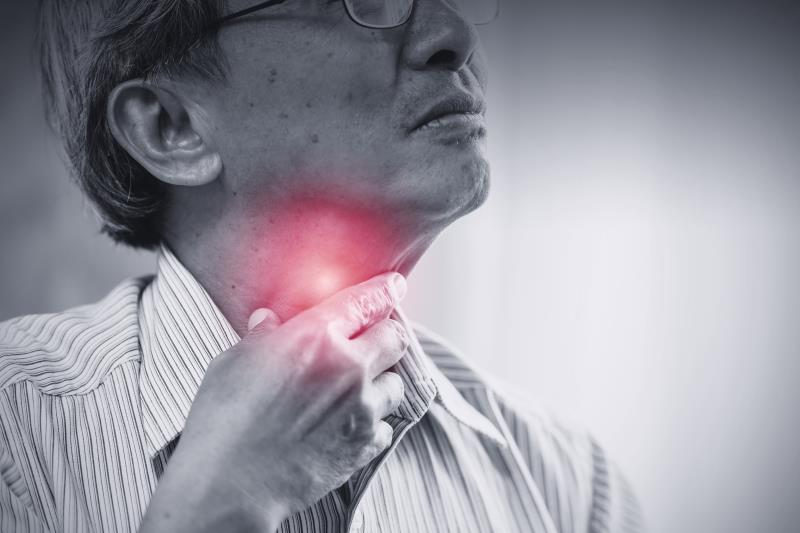
A phase III study has shown the noninferiority of the potassium-competitive acid blocker vonoprazan to the proton pump inhibitor (PPI) lansoprazole for the management of erosive oesophagitis (EO) in an Asian* cohort.
EO occurs in patients with gastro-oesophageal reflux disease (GORD). [J Neurogastroenterol Motil 2014;20:6-16] “The main aim of EO treatment is to relieve symptoms, heal and maintain remission of EO, prevent complications, and improve health-related quality of life,” said the researchers.
Despite the wide array of therapeutic options, there remain several areas of unmet need for GORD (ie, advanced EO, maintenance treatment, and refractory GORD). [J Neurogastroenterol Motil 2015;21:309-319] Moreover, there has been an upsurge in the prevalence of GORD in some Asian countries owing to ageing and Westernization. [J Gastroenterol Hepatol 2012;27:741-745; J Clin Gastroenterol 2016;50:e1-7]
Vonoprazan, while approved in Japan, has not been evaluated in other Asian settings, noted the researchers. Therefore, the team sought to evaluate its efficacy and safety among other Asian patients (n=481; mean age 53.9 years, 73.8 percent male), who were randomized 1:1 to receive either vonoprazan 20 mg or lansoprazole 30 mg once daily for up to 8 weeks. [Gut 2020;69:224-230]
At weeks 2 and 4, EO healing rates were numerically higher with vonoprazan than lansoprazole (75.0 percent vs 67.8 percent [2 weeks] and 85.3 percent vs 83.5 percent [4 weeks]). However, the rates between the vonoprazan and lansoprazole arms became similar by week 8 (92.4 and 91.3 percent), suggesting the noninferiority of the former to the latter.
On subgroup analysis based on severity (ie, Los Angeles classification grade C/D), EO healing rates were higher with vonoprazan vs lansoprazole across all timepoints (62.2 percent vs 51.5 percent [2 weeks], 73.3 percent vs 67.2 percent [4 weeks], and 84.0 percent vs 80.6 percent [8 weeks]).
Both the overall and subgroup findings reflect a rapid response to treatment given the healing rate of >60 percent at 2 weeks, the researchers pointed out. In the overall cohort, the higher 2-week EO healing rate with vonoprazan implies a faster and more potent clinical effect due to the rapid and strong suppression of gastric acid secretion, they added.
“[Unlike PPIs,] vonoprazan is stable in the presence of acid, is water-soluble, and does not require a specific pharmacologic preparation such as an enteric coating. [This] suggests that vonoprazan may have less variation in time to onset of action than PPIs,” explained the researchers.
The rates of treatment-emergent adverse events (TEAEs) were similar between the vonoprazan and lansoprazole arms (38.1 percent vs 36.6 percent). No new safety signals nor deaths were reported.
Fast acid suppression
Although PPIs are the gold standard of treatment for EO, [Gastroenterology 2017;152:706-715; Gut Liver 2017;11:27-37] early-generation PPIs have a slow, cumulative onset of action requiring several doses to achieve maximum acid suppression and symptom relief. [Eur J Gastroenterol Hepatol 2001;13:S29-33]
Evidence shows that vonoprazan generates its maximum acid inhibition as early as day 1 of administration as opposed to PPIs, which take 3–5 days to produce maximum acid-inhibitory effects. [Pharmacol Ther 2005;108:294-307; Aliment Pharmacol Ther 2006;23:2-8] The consistent, rapid-onset, and durable acid suppression observed in the current study appear to correlate with these previous results.
Taken together, the noninferiority of vonoprazan to lansoprazole highlights its potential as a treatment alternative for EO in other Asian patients, noted the researchers, who suggested exploring its effect on EO-related night-time symptoms (ie, heartburn, night-time awakening) in future trials.